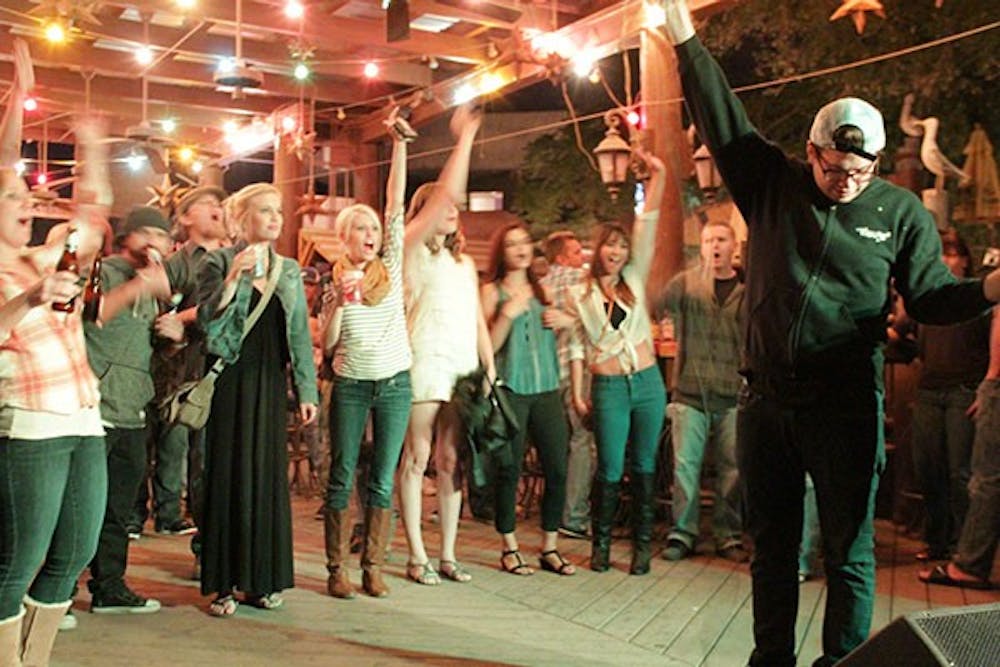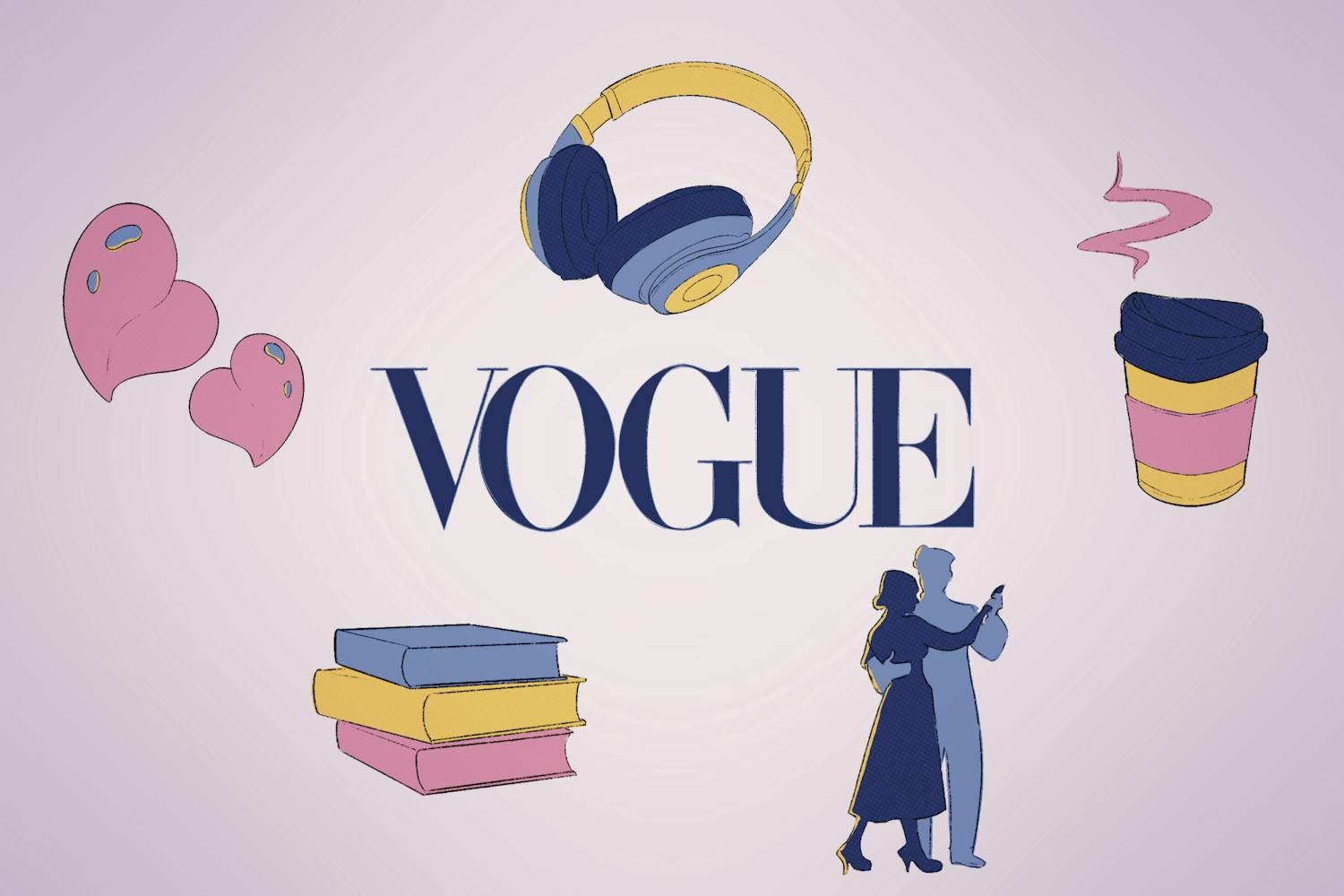 People enjoy the sounds of Mouse Powell, a young local hip-hop artist based in Arizona. More and more young rappers and hip-hop artists are springing up, including rappers like Tyler, the Creator, Pro Era, and Chief Keef. (Photo by Shawn Raymundo)
People enjoy the sounds of Mouse Powell, a young local hip-hop artist based in Arizona. More and more young rappers and hip-hop artists are springing up, including rappers like Tyler, the Creator, Pro Era, and Chief Keef. (Photo by Shawn Raymundo)It’s safe to say that, for the past few years, older rappers have been on the backburner while the younger ones are garnering the majority of the hype.
The rising popularity of young artists can be proven by picking up a magazine or turning on the radio. These youngsters are taking over the rap game at the same time they’re getting ready for their junior prom.
Don’t believe it? Just take a look at Pro Era, a group of Brooklyn rappers, producers and singers who blew up while they were still in high school. The group signed with the label Cinematic Music when frontman Joey Bada$$ was just 16 years old.
The prominence of young rappers isn’t an entirely new phenomenon; Bow Wow had his music videos streaming regularly on MTV when he was 11 years old. What is new is the dominance that young rappers are exhibiting over the game. Their popularity marks an important shift in the demographics of hip-hop artists, and with the age shift comes with different visions.
It seems as though more creativity is coming with the younger crowd. The lyrical content of younger artists differs greatly from those who have been in the game a while and tend to lean away from some of the gangster tendencies glorified in older hip-hop. Pro Era, and another rap group called Underachievers instead rap about spirituality, individualism, chakras and meditation.
Toure Masters, a 22-year-old rapper from Phoenix, is the epitome of this new version of hip-hop.
“I see my music as three things: a tool, a weapon and a cure,” Masters said.
As he experiences the music industry first hand, Masters believes he is especially able to analyze why young rappers are coming to the forefront of hip-hop.
“Young artists have the power to reach the future,” Masters said. “They are in a position to influence minds to think just how they think.”
And it’s true. Almost more so than the rappers who came before them, young artists have a powerful ability to set trends, gain followers and add a fresh, relevant legitimacy to the music of their older predecessors. Take a look at any modern hip-hop song by an older artist, and you’ll most likely find that a young artist was the sole collaborator.
Chief Keef, an 18-year-old rapper from Chicago, has a giant fanbase and a catalog that, along with a few mixtapes, includes works with some of hip-hop’s legends. Keef has collaborated on a number of songs with hip-hop connoisseur Kanye West. West reached out to Keef for all the features, not the other way around.
Why would Kanye West, a millionaire who has been in the rap game since 2000, need a rapper like Chief Keef on his song? Perhaps West recognized that young artists are the key to several things: good music, a broader variety of listeners, extensive radio play, and a spot in every teenagers’ iTunes library.
Young artists also realize that, when it comes to ranking highly on the hip-hop charts, promotion is everything. If your music isn’t on the hottest websites, your name is unknown and your songs aren’t getting downloads.
Rick Sanchez and A.K.T Aktion, creators of phoenixhiphop.net, specialize in scoping out good music. With over 700 artists posted on the website, Sanchez and Aktion created the site to keep developing the local rap and hip-hop scene and youth culture.
“There’s a lot of young kids getting more radio play,” Sanchez said. “We have a lot of young people taking over and dictating all the trends.”
King of setting trends is Tyler, the Creator, the “frontman” of rap collective Odd Future. At 18, Tyler released his first album “Bastard,” which ranked 32nd on Pitchfork’s list of the best albums of 2010. “Yonkers,” the first single off his second album, “Goblin,” catapulted his career and captured teenagers who are now diehard fans. Tyler, The Creator aside, the entire collective of Odd Future is one of the most popular rap groups of today, and it’s not just necessarily because of their music.
More than a group of African-American teenage rappers, they are individual artists with mismatched personalities that resonate highly with youth. The members of Odd Future are social media champions and are able to reach out to their audience more effectively than most. They refer to themselves as being “too black for the white kids, and too white for the black kids,” meaning they’re misunderstood by most; it makes sense why their fans are so committed to them.
Youngsters aren’t only taking all the spots in the rap game, but on the turntables as well. Rashaad Johnson, a conservation biology and ecology freshman, is a college student by day and disc jockey by night. Also known as DJ Fudge, Johnson thinks of himself as “the modern day conductor,” and regularly sings the praises of working in hip-hop as a young artist.
“There’s a big difference between an old DJ and a young DJ,” Johnson said. “I’m able to grab my laptop and mix four different songs at once, whereas an old DJ is used to using classic records so he’s only able to play two songs. He’s only able to do so much.”
Is there room in hip-hop for older artists at all? Of course. Should all rappers in the game over 30 years old retire? Absolutely not. But will a rapper who puts out his first mix tape when he’s in his 40s make it further than someone who released theirs when they were still in high school? Probably not.
Rap veterans like Nas, Jay-Z and Wu-Tang Clan will never be forgotten or replaced, but they will have to adapt to the rap market’s changing needs. It was clear when a 17-year-old Joey Bada$$ was compared to Big L, one of the biggest rappers in the '90s, that young artists have the key to this thing we call hip-hop, and they’re taking over like never before.
Reach the reporter at knphill3@asu.edu or follow her on Twitter @KayLa_Soul




